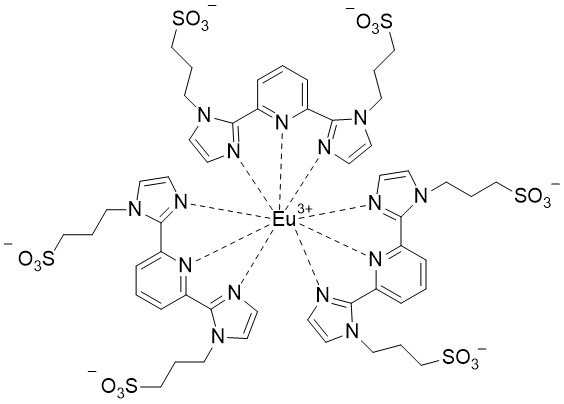SDIP/Europium for Membrane Fusion Assay
Biotium developed SDIP/Eu3 as an alternative to DPA/Tb3 (80104), which is used for vesicle fusion assays.
Please fill in the inquiry form and we will contact you shortly.
Wishlist updated! View wishlist
Product Description
Biotium developed SDIP/Eu3 as an alternative to DPA/Tb3 (80104), which is used for vesicle fusion assays. Similar to DPA/TB 3 assay, one population of vesicles can be loaded with the chelator SDIP while another population of vesicles can be loaded with EuCl3. Intense red fluorescence is produced when the two types of vesicles fuse as a result of formation of the SDIP/Eu3 complex. The main advantage of SDIP/Eu3 over DPA/TB3 is that the SDIP/Eu3 generates fluorescent emission with brighter intensity and much longer wavelength. Each set of products contain 50 mg SDIP and 25 mg EuCl3 in two separate vials.
- λAbs/λEm(for complex) = 250 ~320/~610 nm
- SDIP is a light yellow solid
- EuCl3 is in a colorless crystal
- Both are readily soluble in water
- Both components are stable at room temperature or 4°C
- Aqueous solutions of SDIP should be protected from light
- MW of SDIP: 449
- MW of EuCl3: ~258

